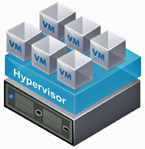The growth of the smallsat industry has been driven by design and manufacturing advances that have reduced satellite size, production costs and time by orders of magnitude; and by new and cutting-edge launch technologies that are driving down launch costs.

The same transformation has to occur in the ground segment. Similar to large, traditional satellites, smallsats require command and control software, data processing, networking and RF signal processing. What they don’t necessarily require is the same degree of complexity and added cost of traditional ground systems designed for large satellites.
Large satellite ground systems are usually procured as a program, with requirements, design reviews and formal acceptance test programs. Smallsat ground systems, on the other hand, are procured like commercial software—smallsat operators evaluate what is available on the market, buy the product that best meets their needs, install that product, get trained, and start using it. If the newly purchased product does not accomplish everything they need, they use product Application Programming Interfaces (APIs) to add the features they want and move on.
This evolution is leading to a new and consolidated approach to smallsat C2 and RF signal processing… one that includes integrated automation of the C2 operations, day to day flight dynamics operations, real-time management of the ground equipment, and enterprise-level management of the network and computer infrastructure itself. In short, a turnkey solution that is simple to install and operate, fits tight budgets and can meet aggressive mission schedules.
This requires optimizing the capabilities for LEO satellite operations and providing powerful operational tools with significant flexibility to be tailored to customers’ operations concepts. It also means designing the applications and overall system to be able to scale cost effectively and operate efficiently to support single smallsat operations up to operating satellite fleets with thousands of satellites. Finally, the product must be easy and inexpensive to deploy.
Ground System Requirements
A ground system in general can be broken into three major groups of capabilities, Command and Control (C2), Baseband, and Radio Frequency (RF), shown in Figure 1 on the next page.
Capabilities required by a space ground system
Starting with the RF subsystem, a ground system needs an antenna and associated electronics for acquisition, tracking, and modulation/demodulation of a spacecraft’s RF command, telemetry, and mission data links. The overall goal of the RF subsystem is to convert baseband bits of data into RF waveforms and vice versa.
The next subsystem in the processing chain is the baseband processing function where the bits of data from the RF subsystem (in the case of telemetry) or the bits of data from the command and control subsystem (in the case of commanding) are processed and formatted for use for either transmission by the RF system or consumption by the C2 system.
The final subsystem moving towards the space operations center is the Command and Control (C2) subsystem. In this subsystem, the processed streams of bits have been formatted into operator understandable telemetry health and status, ready for display at an operator’s console. Likewise, commands can be issued from the C2 system either automatically or via operator to manage the spacecraft while on orbit. C2 is a vital element to the architecture and deserving of a discussion of its own.

Three Keys To Reducing Cost In Smallsat Ground Systems
When considering the cost of a small satellite ground system, it’s important to look past the purchase price and to also evaluate the sustainment costs of the ground system. In most cases, support is needed to fix issues with the software and hardware systems or to make modifications as the ground and spacecraft system evolves. The satellite program needs to determine if it’s more cost effective to maintain engineering support staff for the ground system or to use a vendor’s product maintenance and service level agreements (SLAs) to make the necessary changes.
All of these factors combine to influence the make vs. buy decision, therefore for the ground system providers to succeed; they must focus on elimination of cost in the ground architecture on all fronts. Kratos is aware of this trend and has looked into how to drive cost out of the ground system and believes that cost avoidance can be accomplished through three main tenets:

Figure 2. VMs reduce hardware requirements in the ground system
Reduced dependency on hardware based systems
The first tenet focuses on the use of less hardware based systems and more software oriented solutions for meeting ground processing needs. Traditional application of hardware based processing in the ground system typically applies to the modem and front end processing systems. For example, it’s not uncommon for a narrow band, multi-mission TT&C modem to cost north of $100,000. Comparatively, software based solutions generally do not have recurring costs typical of hardware based systems, i.e., maintenance, repair, and so on and, therefore, have a lower cost of goods sold. This encourages price reduction and can help spur adoption of a particular software solution.
Today, many of the typical ground processing functions can be found in 100 percent software form. Specifically, software modems and software FEPs are common in the marketplace. However, there are limitations to these software based solutions. Software performance can be impacted in real time operations and processing limitations are often constrained by the host platform on which the system is operating. The spacecraft program can mitigate these concerns by moving real time dependencies away from the ground system. Modern spacecraft can include features such as on-board GPS for positioning and timing. This provides a highly accurate time source and avoids the requirement that the ground radio supports ranging which often requires very tight, hardware based timing control. Likewise if the spacecraft has accurate time from GPS, the ground system can issue commands well in advance of time of execution and avoid the custom solutions required for the command release timing problem. In short, by focusing on less hardware and more software and being tolerant of the issues software can have by modifying spacecraft design, a small satellite program can reduce ground system costs through this approach.
Application Of Virtualization Technology
Virtualization is not a new technology by today’s standards—it is, however, new to the ground system industry. The benefits of virtualization allow space craft programs to consolidate processing equipment into fewer, yet higher density computer platforms. Virtualization allows ground processing software to run within a minimal hardware footprint and also promotes the use of concepts like Platform As-A-Service (PAAS) offered by non-space companies such as Amazon’s EC2 service or Microsoft’s Azure service.
The applications must use standard libraries that work on virtual machine hosted operating systems. In addition to the reduction in physical hardware, management of the virtual environments is simplified since the ground system can be managed using a datacenter approach, common in information technology companies. By reducing the amount of physical equipment in the ground system, hardware procurement, maintenance, and refresh costs can be minimized to those ground system functions that absolutely must have supporting hardware.
Elimination Of Integration Labor
The use of software and virtualization technologies in the ground system is instrumental in reducing hardware and labor costs. Integration and test labor costs represent the largest element of cost in a ground system. This is where industry can provide costs savings by lowering upfront costs through pre-integration of COTS software components, compatibility testing with spacecraft radio providers and bus systems, and amortizing sustainment and maintenance costs over multiple users of the same suite of applications.
Furthermore, the smallsat program gains from the common experience of the vendor and their extensive experience providing similar solutions to a wide set of users. This approach ultimately reduces risk both in cost and schedule over building from scratch. A smallsat might have an in-space value of $500,000 to a couple of million dollars, versus a larger satellite which can have an in-space value of $100 to $500 million for commercial satellites, and over a $1 billion for some government satellites. How one manages a <$1M asset that can be replaced within 12 months is quite different from how one manages an asset that costs >$100M and will take two to four years to replace. The three tenets discussed here are intended to make the costs of ground systems commensurate with the value of the smallsat asset.

Mr. Prechtel has over 20 years of experience in management and engineering positions in the satellite and radar industries. At RT Logic, he manages the company’s space control center product lines and their integrated small satellite ground system offerings.
Before joining RT Logic, Matt was a Project Manager at ITT Exelis Corporation leading service life extension projects for space track and missile warning phased array radar systems. Matt’s education includes a BS in Electrical Engineering from the University of Pittsburgh, an MS in Electrical Engineering from Temple University and an MBA from the University of Colorado at Colorado Springs.


